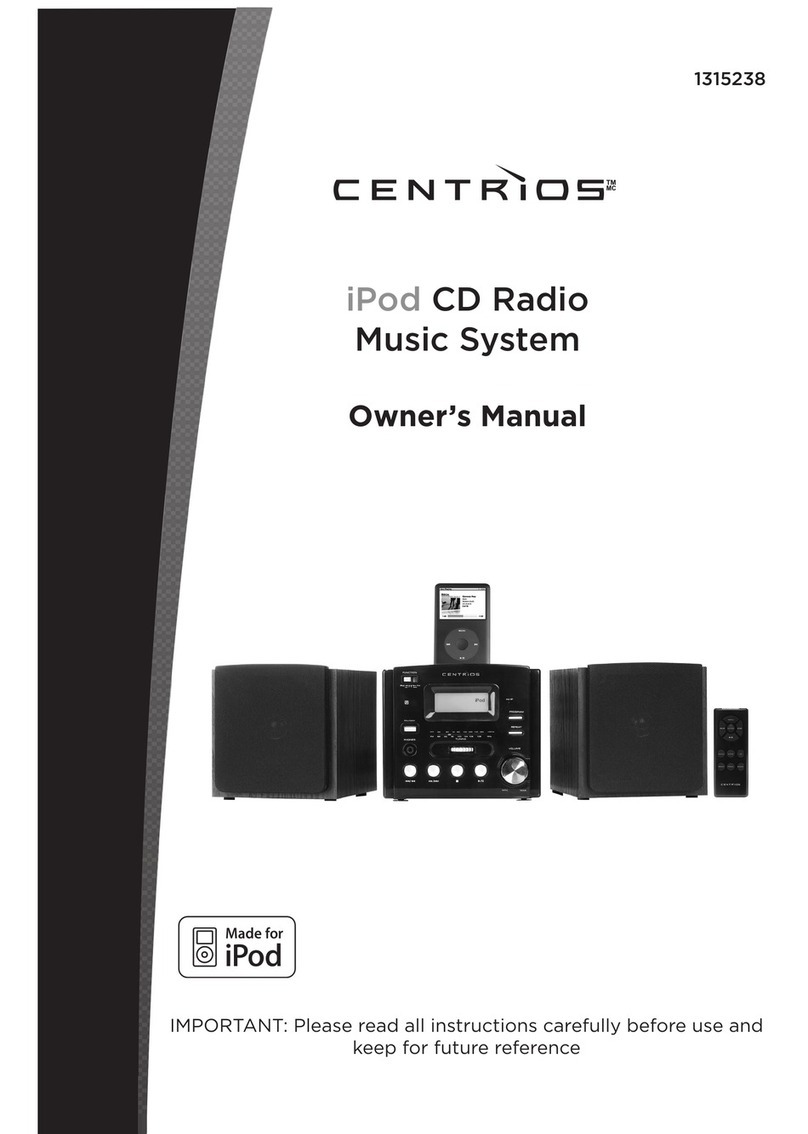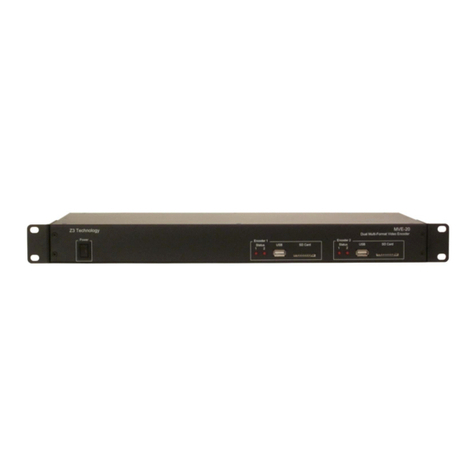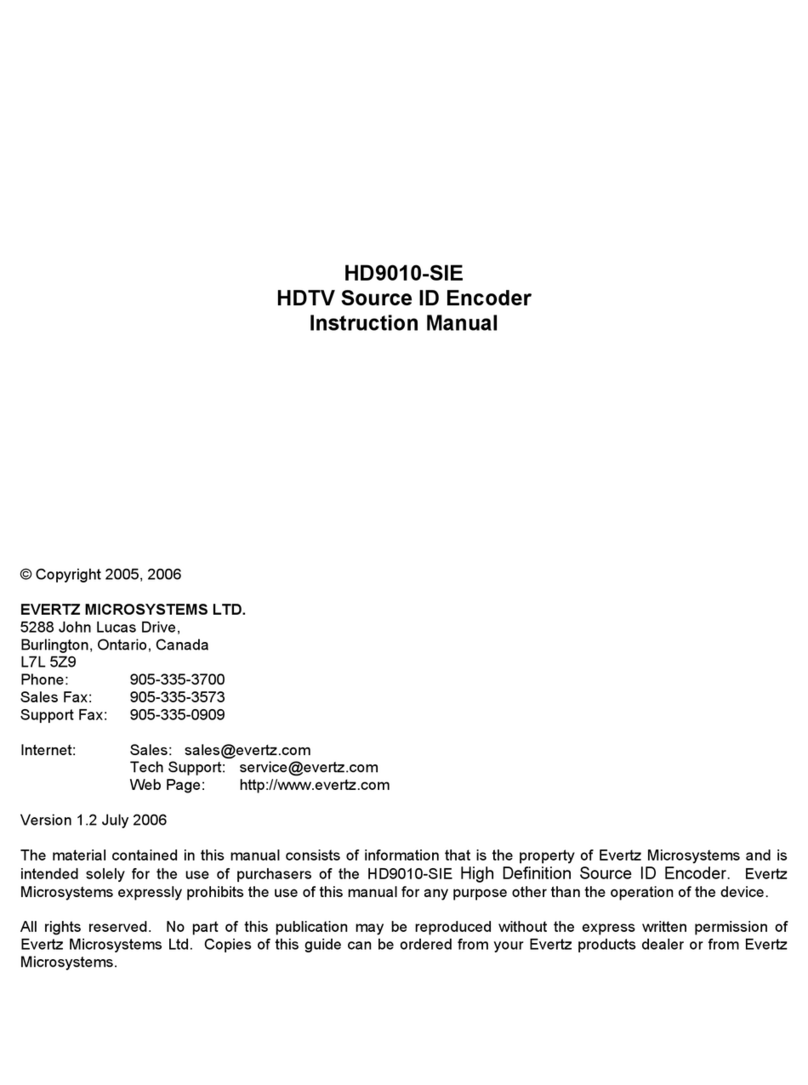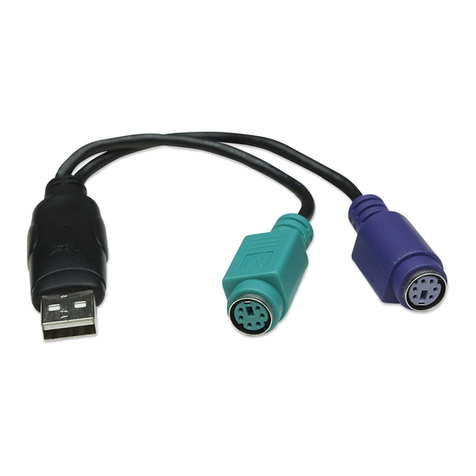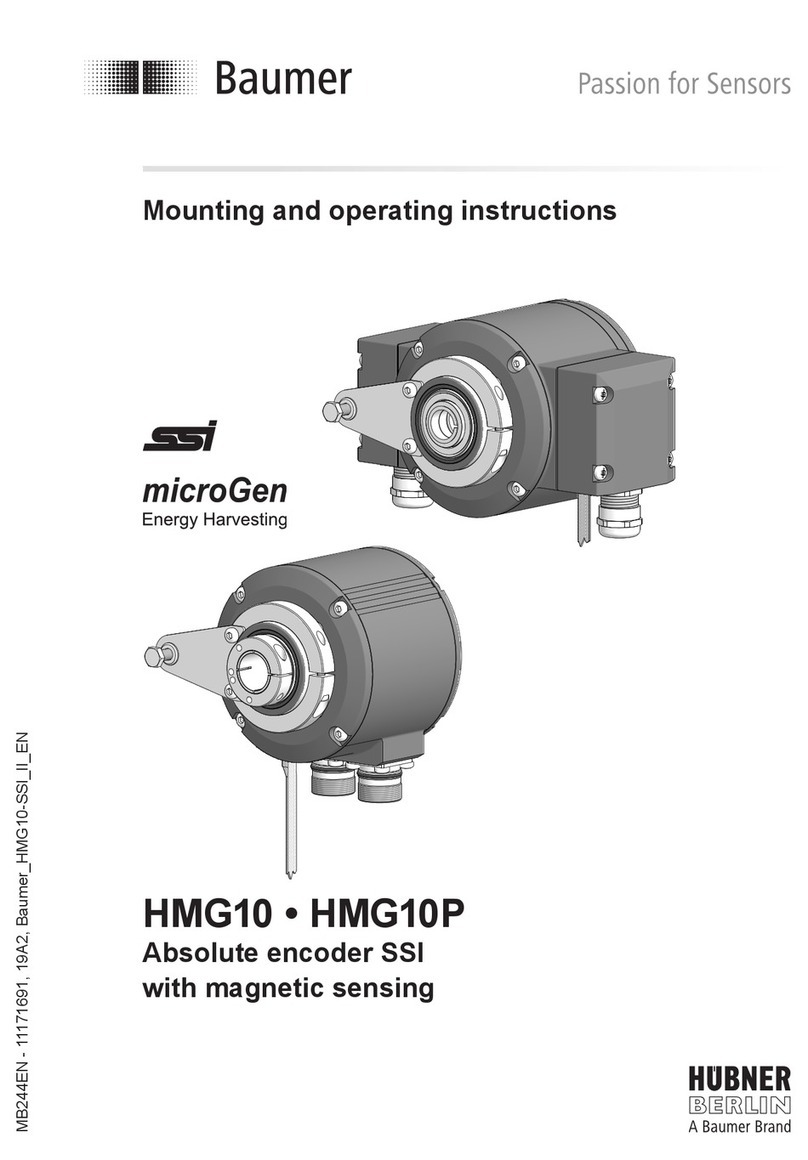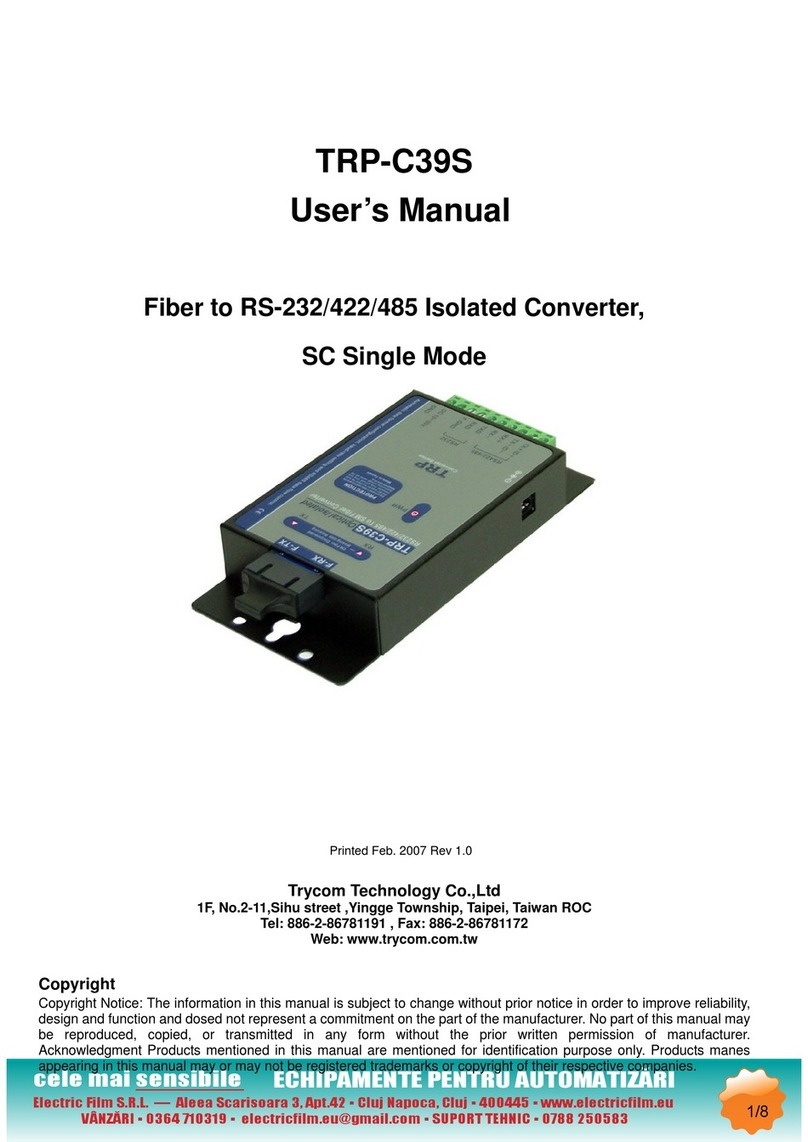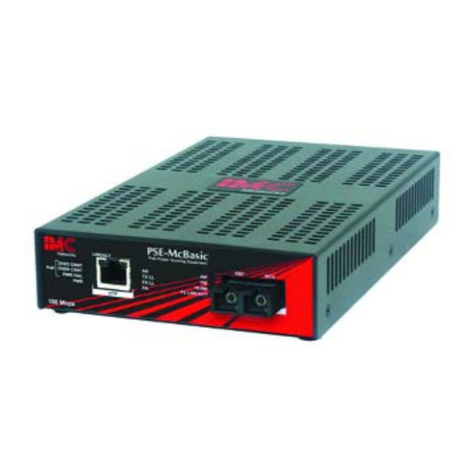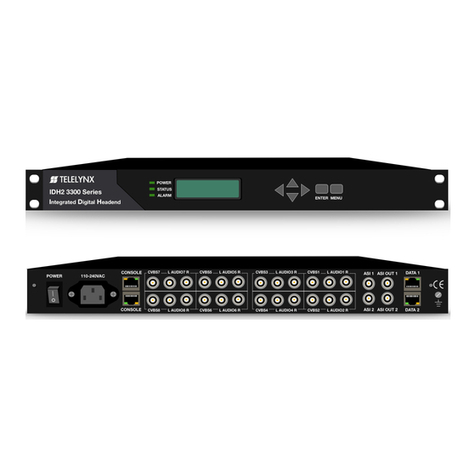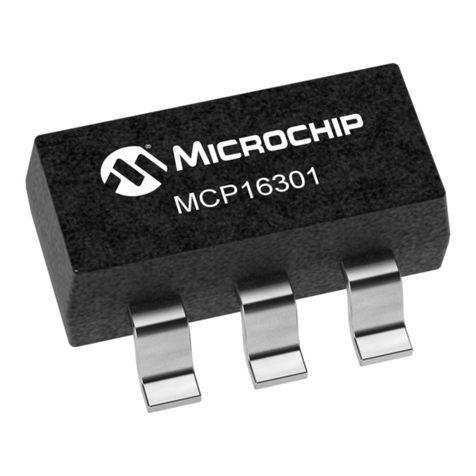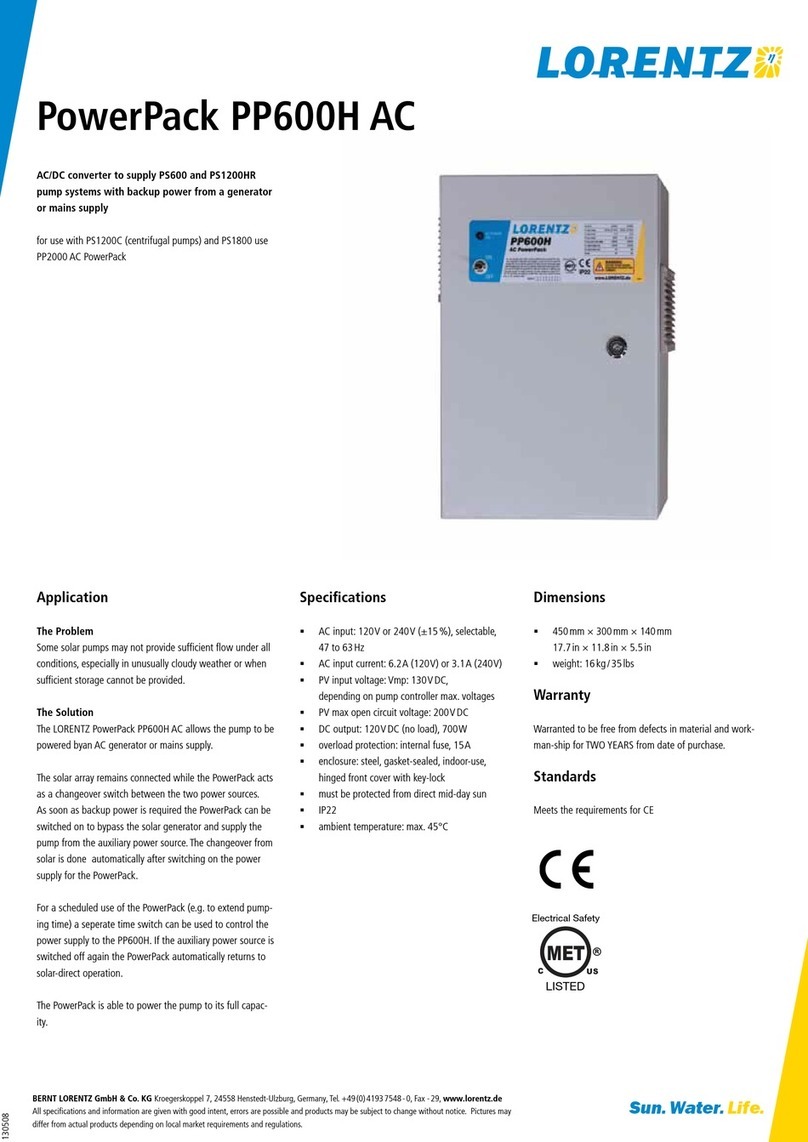ELGO Electronic GMIX2 Series User manual

Operating Manual
SERIES GMIX2
Magnetic Incremental Linear Encoder for large Measuring Distances
Predestined for applications in storage and conveyor technology
Mounting distance from sensor to magnetic tape up to 4 mm
Compact sensor head with integrated evaluation electronics
Magnetic measuring principle with contactless scanning
Speed proportional square wave signal outputs
Wear-free scanning of the magnetic tape
Resolution 2.5 mm (at 4-edge triggering)
Insensitive to dust, dirt and water
High IP67 protection class
Quick and easy to install
799000019 / Rev. 0 / 2019-09-24
Translation of the original operating manual

Contents
- 3 -
1Contents
1Contents ................................................................................................. 3
2List of Figures......................................................................................... 4
3List of Tables .......................................................................................... 4
4General, Safety, Transport and Storage................................................ 5
4.1 Information Operating Manual ........................................................................................... 5
4.2 Explanation of Symbols...................................................................................................... 5
4.3 Statement of Warranties..................................................................................................... 5
4.4 Demounting and Disposal.................................................................................................. 6
4.5 General Causes of Risk ..................................................................................................... 6
4.6 Personal Protective Equipment ............................................................................................ 6
4.7 Conventional Use ............................................................................................................. 7
4.8 Safety Instructions for Transport, Unpacking and Loading ....................................................... 7
4.9 Handling of Packaging Material.......................................................................................... 7
4.10 Inspection of Transport ...................................................................................................... 7
4.11 Storage ........................................................................................................................... 7
5Product Features .................................................................................... 8
5.1 Functional Principle........................................................................................................... 8
5.2 Pulse Diagram.................................................................................................................. 8
6Technical Data ....................................................................................... 9
6.1 Identification .................................................................................................................... 9
6.2 Sensor Dimensions............................................................................................................ 9
6.3 Technical Data Sensor ..................................................................................................... 10
6.4 Technical Data Magnetic Tape ......................................................................................... 11
7Installation and First Start-Up............................................................. 12
7.1 Operating Area .............................................................................................................. 12
7.2 Installation of the Magnetic Tape ...................................................................................... 13
7.3 Mounting the Sensor Head............................................................................................... 16
7.4 Mounting Direction ......................................................................................................... 17
7.5 Alignment of the Sensor to the Magnetic Tape .................................................................... 17
7.6 Alignment of the Sensor to the Magnetic Ring ..................................................................... 18
7.7 Connections................................................................................................................... 18
8Disturbances, Maintenance, Cleaning ................................................. 19
8.1 Fault Clearance.............................................................................................................. 19
8.2 Re-start after Fault Clearance ........................................................................................... 19
8.3 Maintenance .................................................................................................................. 19
8.4 Cleaning ....................................................................................................................... 19
9Type Designation ................................................................................. 20
9.1 Accessories .................................................................................................................... 20
10 Index .................................................................................................... 23

Contents
- 4 -
2List of Figures
Figure 1: GMIX2 ...................................................................................................................................... 8
Figure 2: Magnetic Tape Encoding............................................................................................................. 8
Figure 3: Output Pulse Diagram ................................................................................................................ 8
Figure 4: Sensor Dimensions ..................................................................................................................... 9
Figure 5: Components of the magnetic tape ............................................................................................. 13
Figure 6: Handling ................................................................................................................................. 14
Figure 7: Mounting tolerances ................................................................................................................. 16
Figure 8: Alignment of the sensor to the magnetic tape .............................................................................. 17
Figure 9: Alignment of the sensor to the magnetic ring............................................................................... 18
3List of Tables
Table 1: Resistance against Chemical Influence......................................................................................... 15
Table 2: Mounting tolerances .................................................................................................................. 16
Table 3: Pin assignment of the open cable ends ........................................................................................ 18
Table 4: Accessories ............................................................................................................................... 20

General, Safety, Transport and Storage
- 5 -
4General, Safety, Transport and Storage
4.1 Information Operating Manual
This manual contains important information regarding the handling of the device. For your own safety and operational safety, please ob-
serve all safety warnings and instructions. Precondition for safe operation is the compliance with the specified safety and handling instruc-
tions. Moreover, the existing local accident prevention regulations and the general safety rules at the site of operation have to be observed.
Please read the operating manual carefully before starting to work with the device! It is part of the product and should be kept close to the
device and accessible for the staff at any time. The illustrations in the manual are for better demonstration of the facts. They are not neces-
sarily to scale and can slightly differ from the actual design.
4.2 Explanation of Symbols
Special notes in this manual are characterized by symbols. The notes are introduced by signal words which express the magnitude of danger.
Please follow this advice and act carefully in order to avoid accidents, damage, and injuries.
Warning notes:
DANGER!
This symbol in connection with the signal word “Danger” indicates an immediate danger for the life and health of
persons. Failure to heed these instructions can result in serious damage to health and even fatal injury.
WARNING!
This symbol in connection with the word „Warning” means a possibly impending danger for the life and health of
persons. Failure to heed these instructions can result in serious damage to health and even fatal injury.
CAUTION!
This symbol in connection with the signal word “Caution” indicates a possibly dangerous situation. Failure to heed
these instructions can lead to minor injuries or damage of property.
Special safety instructions:
DANGER!
This symbol in connection with the signal word “Danger” indicates an immediate danger for the life and health of
persons due to voltage. Failure to heed these instructions can result in serious damage to health and even fatal
injury. The operations may only be carried out by a professional electrician.
Tips and recommendations:
NOTE!
…points out useful tips and recommendations as well as information for an efficient and trouble-free operation.
Reference marks:
Marks a reference to another chapter of this manual.
Marks a reference to another chapter of another document.
4.3 Statement of Warranties
The producer guarantees the functional capability of the process engineering and the selected parameters.

General, Safety, Transport and Storage
- 6 -
4.4 Demounting and Disposal
Unless acceptance and disposal of returned goods are agreed upon, demount the device considering the safety instructions of this manual
and dispose it with respect to the environment.
Before demounting, disconnect the power supply and secure against re-start. Then disconnect the supply lines physically and discharge
remaining energy. Remove operational supplies and other material.
Disposal: Recycle the decomposed elements: Metal components in scrap metal, Electronic components in electronic scrap, Recycle plastic
components, dispose the remaining components according to their material consistence.
CAUTION!
Wrong disposal causes environmental damages! Electronic scrap, electronic components, lubricants and other
auxiliary materials are subject to special refuse and can only be disposed by authorized specialists!
Local authorities and waste management facilities provide information about environmentally sound disposal.
Safety
CAUTION!
Please read the operating manual carefully, before using the device! Observe the installation instructions!
Only start up the device if you have understood the operating manual. The operating company is obliged to take
appropriate safety measure. The initial operation may only be performed by qualified and trained staff.
Selection and installation of the devices as well as their embedding into the controlling system require qualified
knowledge of the applicable laws and normative requirements on the part of the machine manufacturer.
4.5 General Causes of Risk
This chapter gives an overview of all important safety aspects to guarantee an optimal protection of employees and a safe and trouble-free
operation. Non-observance of the instructions mentioned in this operating manual can result in hazardous situations.
4.6 Personal Protective Equipment
Employees have to wear protective clothing during the installation of the device to minimize danger of health.
Therefore:
Change into protective clothing before performing the works and wear them throughout the process.
Additionally observe the labels regarding protective clothing in the operating area.
Protective clothing:
PROTECTIVE CLOTHING
… is close-fitting working clothing with light tear strength, tight sleeves and without distant parts. It serves preliminari-
ly for protection against being gripped by flexible machine parts.
Do not wear rings, necklaces or other jewelry.
PROTECTIVE GLOVES
…for protecting the hands against abrasion, wear and other injury of the skin.
PROTECTIVE HELMET
…for protection against injuries of the head.

General, Safety, Transport and Storage
- 7 -
4.7 Conventional Use
The ELGO-device is only conceived for the conventional use described in this manual.
The magnetic linear encoder GMIX2 only serves to measure lengths, positions, angle and speeds.
CAUTION! Danger through non-conventional use!
Non-intended use and non-observance of this operating manual can lead to dangerous situations.
Therefore:
Only use the device as described
Strictly follow the instructions of this manual
Avoid in particular:
Remodeling, refitting or changing of the construction or single components with the intention to alter the
functionality or scope of the device.
Claims resulting from damages due to non-conventional use are not possible.
Only the operator is liable for damages caused by non-conventional use.
4.8 Safety Instructions for Transport, Unpacking and Loading
CAUTION!
Transport the package (box, palette etc.) professionally.
Do not throw, hit or fold it.
4.9 Handling of Packaging Material
Notes for proper disposal: 4.4
4.10 Inspection of Transport
Check the delivery immediately after the receipt for completeness and transport damage.
In case of externally recognizable transport damages:
Do not accept the delivery or only accept under reserve.
Note the extent of damages on the transportation documents or delivery note.
File complaint immediately.
NOTE!
Claim any damage immediately after recognizing it.
The claims for damage must be filed in the lawful reclaim periods.
4.11 Storage
Store the device only under the following conditions:
Do not store outside
Keep dry and dust-free
Do not expose to aggressive media
Protect from direct sun light
Avoid mechanical shocks
Storage temperature (6.3) needs to be observed
Relative humidity (6.3) must not be exceeded
Inspect packages regularly if stored for an extensive period of time (>3 months)

Product Features
- 8 -
5Product Features
GMIX2 is an incremental sensor that can be mounted at a distance
of up to 4 mm to the magnetic tape (7.5). For rotative resp. radial
applications a magnet ring (7.6) can be used alternatively. The
evaluation electronics, which converts the measured signals into 90°
phase-shifted square-wave signals A and B, is already integrated in
the sensor head.
Thus GMIX2 is ready-to-connect for subsequent electronics. The system is supplied with 10 ... 30 VDC and
generates HTL output signal levels according to the supply voltage.
Essential features:
Predestined for applications in storage and conveyor technology
Compact sensor head with integrated evaluation electronics
High mounting distance to magnetic tape (max. 4 mm)
Speed proportional square wave signal outputs
2.5 mm resolution (at 4-edge triggering)
Repeat accuracy ± 1 increment
High protection class IP67
Applications:
With its resolution of 2.5 mm and a maximum operating speed of 10 m/s, the GMIX2 measuring system is ide-
ally suited for applications in storage or conveyor technology or for longer measuring distances. Thanks to the
wear-free magnetic measuring principle and the high IP67 protection class, the sensor always works unaffected
and reliably even in harsh environments.
5.1 Functional Principle
The basis of the magnetic incremental encoder consists of a scanning technology, which scans the north and
south poles on the coded magnetic tape and produces a single Sine/Cosine wave for each pole. The complete
sine/cosine signal process is interpolated electronically. Depending on refinement of the interpolation, together
with the pole distance of the magnetic tape, the resolution of the measuring system is determined.
The magnetic tape MB20-50-10-1-R has a pole pitch of 5 mm.
A special evaluation electronic (translator) processes the sine/cosine wave into HTL square output signals from
the signal information of the magnetic tape. These square signals are equivalent to conventional optical rotary-
or linear encoder outputs.
Figure 2: Magnetic Tape Encoding
5.2 Pulse Diagram
Figure 3: Output Pulse Diagram
N N N NS S S S N N N NS S S S N NS SN NS SS
B
A
90°
10 … 30 V
Channel A and B are phase
shifted by 90° (±20 %).
Figure 1: GMIX2

Technical Data
- 9 -
6Technical Data
6.1 Identification
The type label serves for the identification of the unit. It is located on the housing of the device and indicates the
exact type designation (=order reference 9) with the corresponding part number. Furthermore, the type label
contains a unique, traceable device number. When corresponding with ELGO please always indicate this data.
6.2 Sensor Dimensions
Figure 4: Sensor Dimensions
10
Cable outlet
25
4
21
37
2 X Ø 3.2
2,5
35
6.5
2.5
4

Technical Data
- 10 -
6.3 Technical Data Sensor
GMIX2 (standard version)
Mechanical Data
Measuring principle
incremental
Repeat accuracy
± 1 Increment
System accuracy at 20°C
±(25 + 20 x L), L = measuring length in meters
Distance sensor - magnetic tape
max. 4.0 mm
Housing material
HM-PA (polyamide), black
Housing dimensions (L x W x H)
38.5 x 25 x 10 mm
Required magnetic tape
MB20-50-10-1-R
Magnetic tape pole pitch
5 mm
Maximum measuring length
theoretically unlimited
Connections
open cable ends
Sensor cable
1.5 m standard cable length (others on request), drag-chain suitable
Sensor cable bending radius
min. 60 mm
Weight
sensor head: approx. 25 g (without cable); cable: approx. 45 g/m
Electrical Data
Power supply voltage
10 …30 VDC
Residual ripple
< 10 %
Current consumption
max. 30 mA
Output signals
A, B
Output levels
HTL
Resolution (at 4-edge triggering)
2.5 mm
Max. output frequency per channel
4 kHz
Max. operating speed
10.0 m/s
Environmental Conditions
Storage temperature
−20 … +85° C
Operation temperature
–10 ... +70 °C
(–25 ... +85 °C on request)
Humidity
max. 95 %, non-condensing
Protection class
IP67

Technical Data
- 11 -
6.4 Technical Data Magnetic Tape
The magnetic tape consists of two components:
The actual magnetic tape which carries the position information
A mechanical stainless steel back iron
Magnetic Tape MB20-50-10-1-R
Coding
incremental, single track system
Pole pitch
5 mm
Operation temperature installed
−20 … +65° C
Storage temperature uninstalled
Short-term: −10 … +60° C
Medium-term: 0 …+40° C
Long-term: +18° C
Gluing temperature:
+18 … +30° C
Relative humidity
max. 95 %, non-condensing
Accurateness 20°C in mm
±(25 + 20 x L), L = measuring length in meters
Material carrier tape
Precision strip 1.4310 / X10CrNi 18-8 (EN 10088-3)
Double-faced adhesive tape
3M-9088 (observe instructions), others on request
Width
10 mm
Height
magnetic tape without back iron stripe: 1.05 mm (± 0.10)
with back iron, without adhesive tape: 1.35 mm (± 0.11)
with back iron + adhesive tape, without protective foil: 1.55 mm (± 0.13)
with back iron + adhesive tape + protective foil: 1.63 mm (± 0.14)
Length expansion coefficient
16 x 10-6 1/K
Thermal length expansion
∆L[m] = L[m] x [1/K] x ∆[K]
(L = tape length in meters, ∆= relative temperature change)
Bending radius
min. 150 mm
Available lengths
32 m (up to 70m on request)
Weight magnetic tape
ca. 62 g/m (incl. magnetic tape and cover tape)
Tape imprint
ELGO standard, printing color black, digit height >= 5 mm
Protection class
IP65
Influence of external magnets
External magnetic fields must not exceed 64 mT (640 Oe; 52 kA/m) on
the surface of the magnetic tape because this could damage or destroy the
code on the tape.

Installation and First Start-Up
- 12 -
7Installation and First Start-Up
CAUTION
Please read the operating manual carefully before using the device! Strictly observe the Installation instructions!
In case of damage caused by failure to observe this operating manual, the warranty expires.
ELGO is not liable for any secondary damage and for damage to persons, property or assets.
The operator is obliged to take appropriate safety measures.
The first start-up may only be performed by qualified staff that has been trained and authorized by the operator.
7.1 Operating Area
WARNING!
Do not use the device in explosive or corrosive environments! The device must not be installed close to sources of
strong inductive or capacitive interference or strong electrostatic fields!
CAUTION!
The electrical connections must be made by suitably qualified personnel in accordance with local regulations.
The device may be designed for switchboard mounting. During work on the switchboard, all components must be de-
energized if there is a danger of touching the energized parts!
(protection against contacts)
Wiring works may only be performed in the de-energized state!
Thin cable strands have to be equipped with end sleeves!
Before switching on the device, connections and plug connectors have to be checked!
The device must be mounted in a way that it is protected against harmful environmental influences such as splashing
water, solvents, vibration, shock and severe pollution and the operating temperature must not be exceeded.

Installation and First Start-Up
- 13 -
7.2 Installation of the Magnetic Tape
NOTE: External Magnetic Fields
The magnetic tape must not be influenced by external magnetic fields! The magnetic tape
must not come into direct contact with other magnetic fields (e.g. permanent magnets, mag-
netic clamps, electromagnets, magnetic stands)! This may cause irreparable damage, which
will compromise the measuring accuracy or even the functioning.
7.2.1 The Magnetic Tape MB20-50-10-1-R
In the standard case, the magnetic tape is delivered as described
It is installed by gluing it to the respective mounting surface.
The magnetic tape consists of 2 pre-assembled components (see Figure 7: Components of the magnetic tape
below):
A magnetized, flexible plastic tape (Pos. 3), which is connected with a magnetically conductive steel
tape as inference band (Pos. 4) and is supplied with an adhesive tape (Pos. 5).
A magnetized permeable cover tape (Pos. 1), which serves for the mechanical protection of the plastic
tape (not required for the measurement) and is supplied with an adhesive tape (Pos. 2).
Therefore a divergent tape structure and scope of delivery is also possible.
The cover tape is also available separately
Figure 5: Components of the magnetic tape
Pos. 1: Stainless steel cover tape
Pos. 2: Double-sided tape
Pos. 3: Magnetized plastic tape
Pos. 4: Carrier tape stainless steel
Pos. 5: Double-sided tape
Pos. 6: Mounting surface, for example machine bed

Installation and First Start-Up
- 14 -
7.2.2 Handling
In order to avoid tension in the tape, it must not be stretched, compressed or twisted. It should be stored with the
magnetized plastic tape to the outside. The minimum bending radius is 150 mm.
Figure 6: Handling
7.2.3 Processing hint for the gluing of magnetic tapes
Surface-Preparation: In order to guarantee optimal adhesion, all anti-adhesive contamination (e.g. oil, grease,
dust, separating agents) has to be removed using solvents with residue-free evaporation.
Suitable agents are ketones or alcohols. Typical solvents for cleaning the surface are a 50/50 isopropyl alco-
hol/water mixture or heptane. Those agents are offered by Loctite and 3M among others as surface cleaners.
When using solvents, always observe the manufacturer instructions! If the surface is copper, brass etc., it should
be sealed to avoid oxidation.
Contact-Pressure: The strength of the adhesion is directly dependent on the contact the adhesive can form with
the surface. Therefore it is important to use as much pressure as possible when gluing the tape, possibly by us-
ing aids such as draw rolls. The optimum contact pressure is 4…5 kg/cm2).
Gluing temperature: The optimal gluing temperature is between + 18° C and 30° C. Avoid colder sticking sur-
faces than + 10°C, because in this case the adhesive becomes too hard and perhaps a sufficient immediate
adhesion is hardly to achieve. After proper sticking, the stability of the connection is ensured also when the tem-
perature is below zero. The final tackiness of a sticking is from experience reached after approximately 72 hours
(at + 21° C). For gluing use only the supplied adhesive tape.
7.2.4 Cutting and Gluing
Before starting the gluing process, both the magnetic and the cover tape have to be cut to the required length
Length cover tape = measuring length + sensor length + 50mm (end caps)
NOTE!
When sticking the magnetic tape pay attention to the markings on the tape and the Sensor.
Improper installation does not provide the correct values. A already glued magnetic tape is
destroyed after the removal, and cannot be used again. Note also the direction of counting
of the measuring system.
Preferably the magnetic tape should be glued close to an edge or into a groove, which
should be deep enough to embed the magnetic tape and the cover tape.
When unprotected, the cover tape may peel off!
Therefore: Use tape end caps (9.1) or let the cover tape overlap the end of the magnetic
tape and fix it with a screw.
Magnetized
plastic tape
Steel tape

Installation and First Start-Up
- 15 -
The tape must be glued smoothly on the surface. The measuring accuracy decreases if the tape is not even!
Before gluing the magnetic tape and the cover tape onto the surface, they should be left lying on the mounting
surface for ca. 30 minutes so that the temperature matches. This prevents strain in the tape due to thermal ex-
pansion.
Mounting steps:
1. Thoroughly clean the surface (7.2.3)
2. Acclimatization: let magnetic tape and cover tape adjust their temperature
3. Remove the protection foil from the magnetic tape
4. Glue magnetic tape under great pressure
5. Thoroughly clean surface of magnetic tape
6. Remove the protection foil from the cover tape
7. Glue the cover tape under great pressure
8. Safeguard the ends of the cover tape against peeling off, e.g. by using end caps (9.1)
7.2.1 Resistance against Chemical Influence
Table 1: Resistance against Chemical Influence
Show no or little effect in constant contact after 2-5 years:
formic acid
glycerol 93°C
linseed oil
soy beans oil
cotton seed oil
N-hexane
lactic acid
formaldehyde 40%
Iso octane
petroleum
Show weak to moderate effects in constant contact after approximately 1 year:
acetone
gasoline
acetic acid 30%
oleic acid
acetylene
steam
acetic acid, pure acetic acid
sea water
ammonia
acetic acid 20%
isopropyl ether
stearic acid 70°C, anhydrous
kerosene
Have strong effects when contacting permanently after 1-5 months:
benzene
nitric acid 70%
turpentine
toluene
lacquer solvent
nitric acid, red, vitriolic
carbon tetrachloride
tetrahydrofuran
trichloroethylene
nitrobenzene
hydrochloric acid 37%, 93°C
xylene

Installation and First Start-Up
- 16 -
7.3 Mounting the Sensor Head
To mount the sensor head, use 2 x M3 screws of adequate length.
see also section 6.2 Sensor Dimensions
During installation, the specified installation tolerances must also be adhered to:
7.3.1 Mounting Tolerances
Table 2: Mounting tolerances
Magnetic tape
MB20-50-10-1-R
Sensor distance to the tape:
max. 4.0 mm
Lateral offset:
± 1 mm
Tilt and pitch angle:
± 5°
Yaw angle:
± 1.5°
Figure 7: Mounting tolerances
max. 4.0 mm
± 1 mm
Sensor distance: Lateral offset:
Pitch angle: Tilt angle:
Yaw angle:
± 5°
± 1.5°

Installation and First Start-Up
- 17 -
7.4 Mounting Direction
On the underside of the sensor there is a sticker which signals the magnetic
tape side with the active sensor areas. In addition, the -marking indicates the
positive counting direction.
7.5 Alignment of the Sensor to the Magnetic Tape
For linear applications with a magnetic tape, the center of the sensor is aligned to the center of the magnetic
tape. Both active sensor areas (see red hatched surfaces in the figure below) must be guided over the tape at the
permitted distance up to a maximum of 4.0 mm.
Figure 8: Alignment of the sensor to the magnetic tape
NOTE!
Please make sure that the mounting tolerances (see section 7.3.1) are observed.
max. 4.0 mm
Magnetic tape
Mounting surface
Cable outlet
approx.
1 mm
Sensor center = magnetic tape center
19
26.5
14.5
22
2 active sensor areas
Side view:
Top view:

Installation and First Start-Up
- 18 -
7.6 Alignment of the Sensor to the Magnetic Ring
For rotative or radial applications with a magnetic ring, the diameter of the ring must be large enough so that
both active sensor areas (see red hatched surfaces in the figure below) are within the permitted mounting dis-
tance of max. 4.0 mm. For this purpose, the center between the distance of both sensor surfaces and the center
of the magnetic ring has to be aligned (see side view below - dimension 20.5 mm). Viewed from above, the
center of the sensor must be aligned to the center of the magnetic tape (see top view).
Figure 9: Alignment of the sensor to the magnetic ring
Available magnet rings can be found in section 9.1 Accessories.
NOTE!
Please make sure that the mounting tolerances (see section 7.3.1) are observed.
7.7 Connections
The GMIX2 measuring system is connected via open cable ends according to the following table:
Table 3: Pin assignment of the open cable ends
Type of connection
Color
Function
Description
Open cable ends
Black
0 V / GND
Ground
Brow
10 … 30 VDC
Voltage supply
Red
A
Channel A
Orange
B
Channel B
Blank
Screen
Screen/Shield
19
26.5
approx. 1 mm
Positions of sensor areas:
max. 4.0 mm
14.5
22
2 active sensor areas
Sensor center = center of the magnet ring
20,5*
*) Center between
sensor area distance
= center of magnetic ring
Side view: Top view:
Magnet ring Cable outlet

Disturbances, Maintenance, Cleaning
- 19 -
8Disturbances, Maintenance, Cleaning
This chapter describes possible causes for disturbances and measures for their removal. In case of increased disturbances, please follow the
measures for fault clearance in chapter 8.1. In case of disturbances that cannot be eliminated by following the advice and the fault clear-
ance measures given here, please contact the manufacturer (see second page).
8.1 Fault Clearance
CAUTION!
The device, the connection line and the signal cable must not be installed next to sources of interference that emit
strong inductive or capacitive interference or strong electrostatic fields.
External perturbations can be avoided thorough suitable cable routing.
The screen of the signal output cable should only be connected to the following circuit on one side. The screens
should not be grounded on both sides. Signal cables always have to be routed separately from the load power line.
A safety distance of at least 0.5 m has to be kept from inductive and capacitive sources of interference such as con-
tactors, relays, motors, switching power supplies, clocked controllers etc.!
If interferences occur in spite of all the items stated above being observed, please proceed as follows:
1. Installation of RC-circuits via contactor coils of AC-contactors (e.g. 0.1 µF / 100 Ω)
2. Installation of recovery diodes via DC-inductors
3. Installation of RC-circuits via the different motor phases (in the terminal box of the motor)
4. Do not connect protective earth and ground
5. Connect a mains filter ahead of the external power pack
8.2 Re-start after Fault Clearance
After the fault clearance:
1. Reset the emergency stop mechanism if necessary
2. Reset the error report at the super-ordinate system if necessary.
3. Ensure that there are no persons in the danger area.
4. Follow the instructions from chapter 7.
WARNING! Danger of injury through non-conventional fault clearance!
Non-conventional fault clearance can lead to severe injuries and damage of property.
Therefore:
Any work to clear the faults may only be performed by sufficiently qualified staff
Arrange enough space before starting the works
Make sure that the mounting area is clean and tidy. Loose components and tools are sources of accidents.
If components need to be replaced:
Pay attention to a correct installation of the spare parts.
Reinstall all the fixing elements properly
Before turning on the device, ensure that all covers and safety equipment is installed correctly and functions
properly
8.3 Maintenance
The device is maintenance-free.
8.4 Cleaning
WARNING!
The device can only be cleaned with a damp cloth, do not use aggressive cleanser!

Type Designation
- 20 -
9Type Designation
NOTE
When ordering, please use the here described ordering code (Type Designation). Options
that are not required are filled in with „-„.
9.1 Accessories
Table 4: Accessories
Order Designation
Description
MB20-50-10-1-R
Magnetic tape with 5 mm pole pitch (please indicate length in XX.X m)
10 mm end cap set
2 end caps (10 mm) for magnetic tape. Two M3 screws included. Additional fixation in
the radial and linear range to protect the ends of the magnetic tape.
FS1000, FS1500
or FS2000
Guide rail for magnetic tape (length: 1.0 m, 1.5 m and max. 2.0 m available).
For longer measuring lengths the rails can be lined up together.
AP-00-XX**
Aluminium cover-profile for magnetic tapes (as alternative to the cover tape).
**) AP-00-1m = 1m long / AP-00-2m = 2 m long
MR2012
Magnet ring (Ø o = 19,75 mm / Ø i = 14.7 mm, w = 4.1 mm, 12 poles, IF = 2)
MR3824
Magnet ring (Ø o = 38 mm / Ø i = 30 mm, w = 6,5 mm, 24 poles, IF = 200)
MR7244
Magnet ring (Ø o = 72 mm / Ø i = 54 mm, w = 7 mm, 44 poles, IF = 500)
POSU
Pole finder card 85 x 55 mm
GMIX2 XX.X
Series/Type:
Version:
000 = standard version
001 = 1. special version etc.
Signal Cable Length:
01.5 = 1.5 m standard length
(others on request)
000 --
Table of contents
Other ELGO Electronic Media Converter manuals
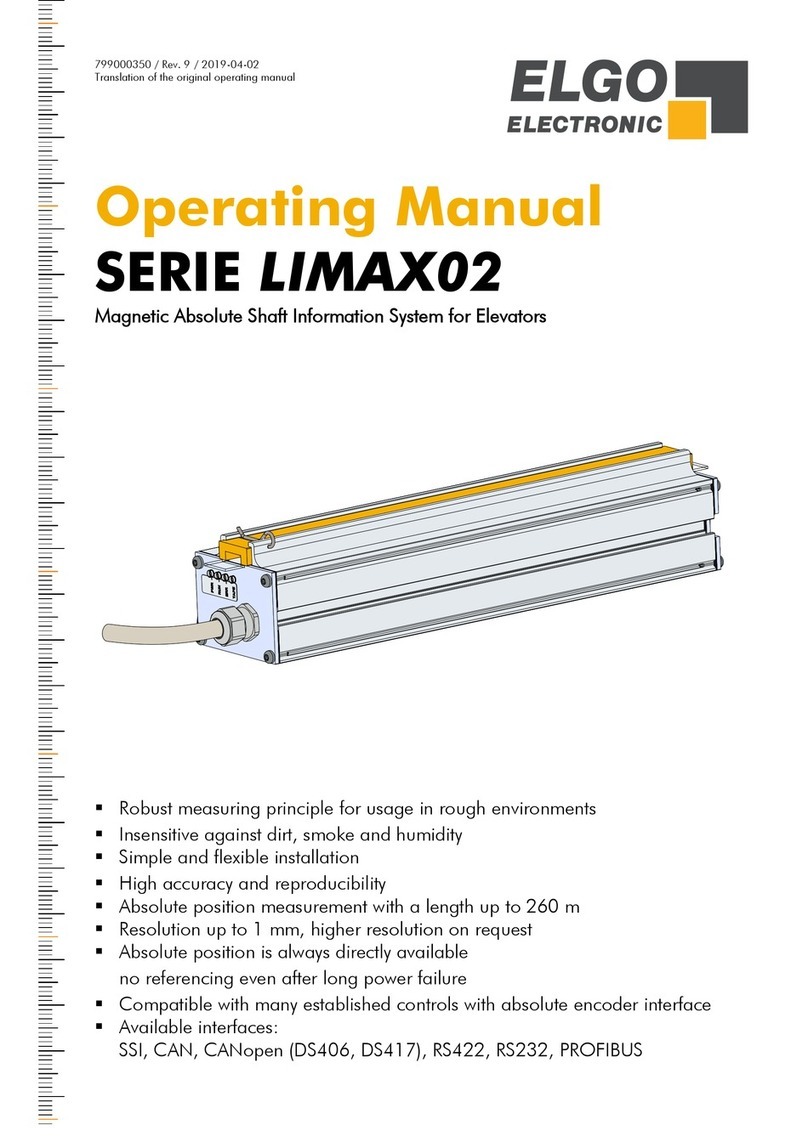
ELGO Electronic
ELGO Electronic LIMAX02 Series User manual

ELGO Electronic
ELGO Electronic PMIX Series User manual
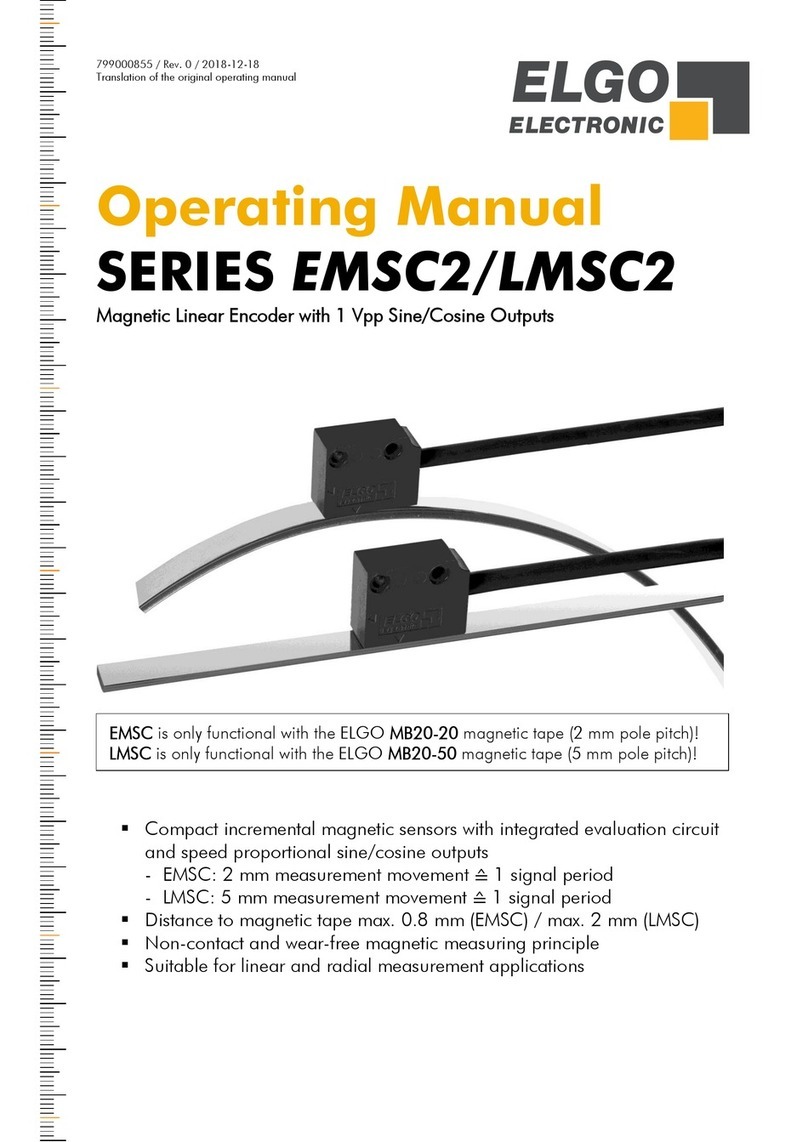
ELGO Electronic
ELGO Electronic EMSC2 Series User manual
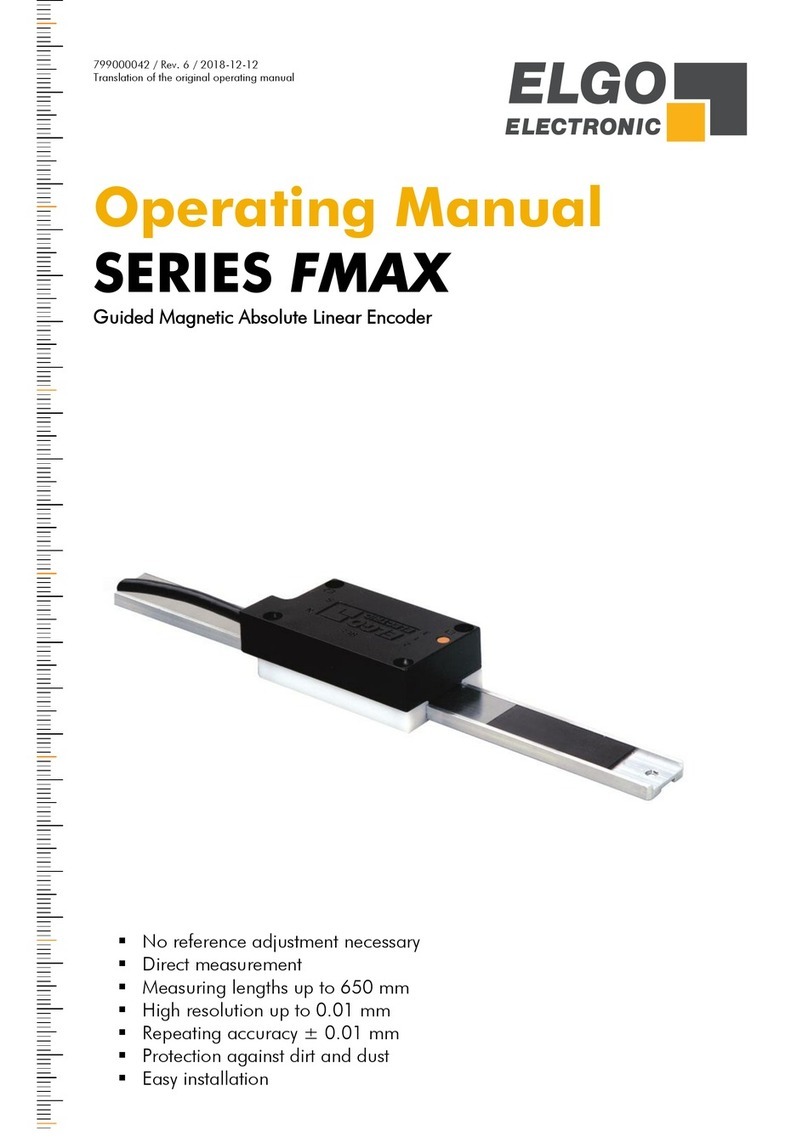
ELGO Electronic
ELGO Electronic FMax Series User manual
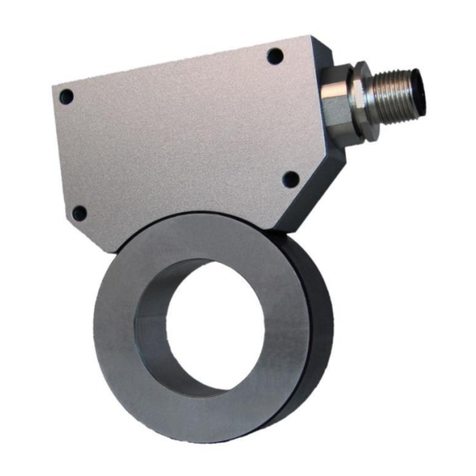
ELGO Electronic
ELGO Electronic EMAX-RO Series User manual
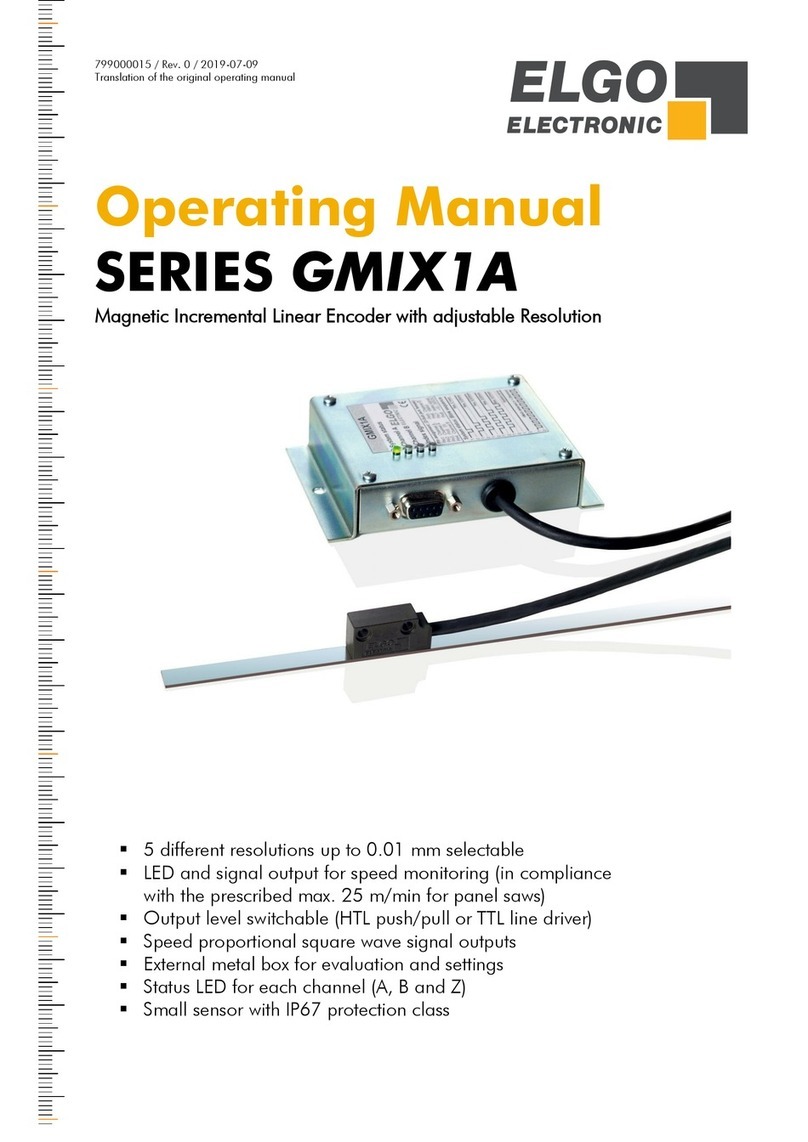
ELGO Electronic
ELGO Electronic GMIX1A Series User manual


